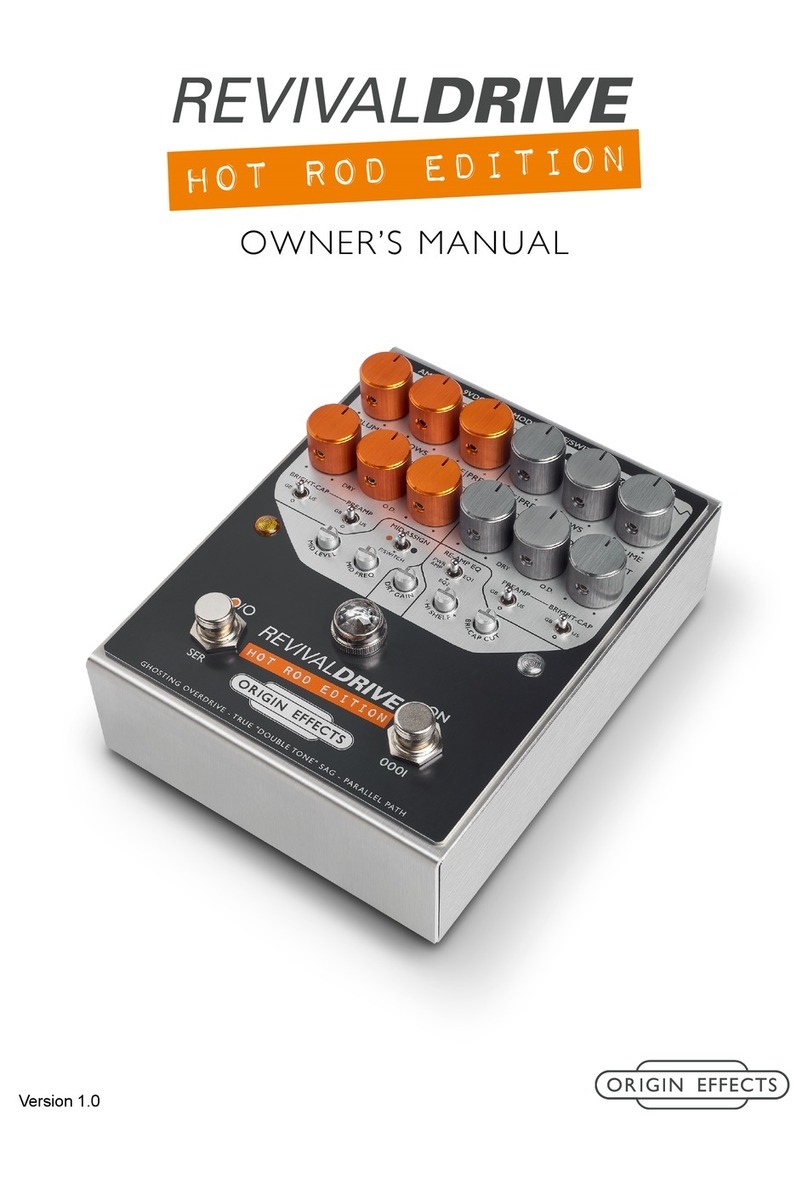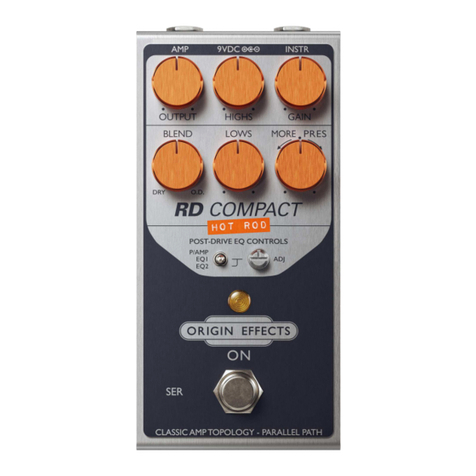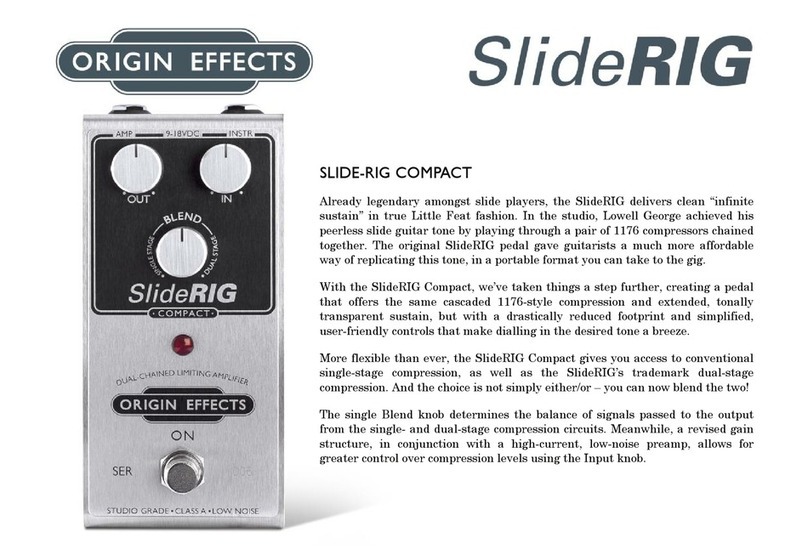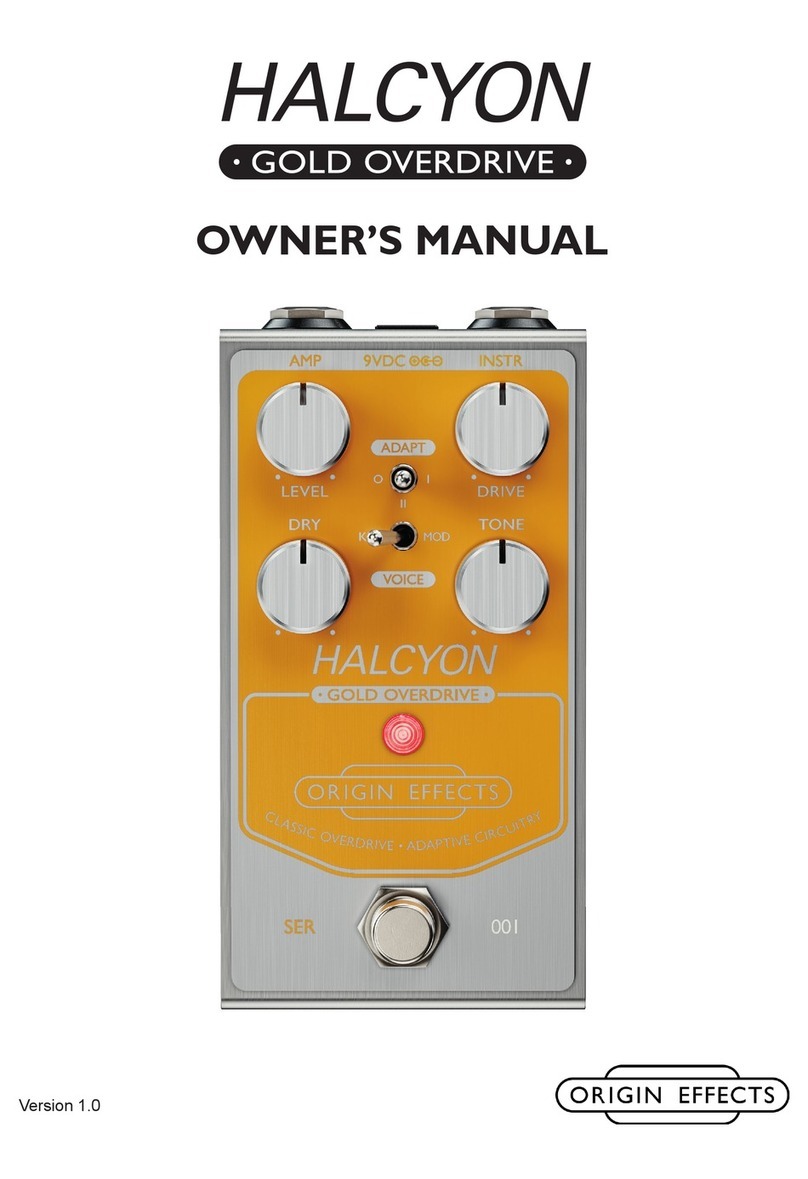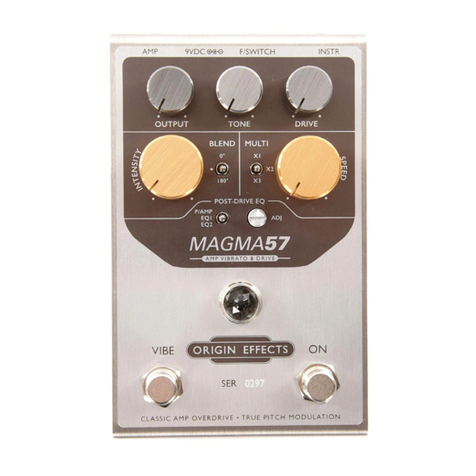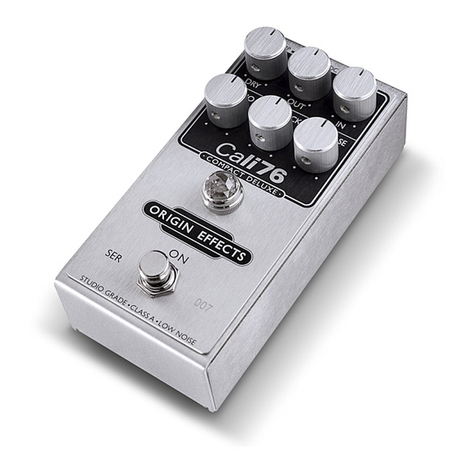
REVIVALDRIVE CUSTOM PANEL
To properly compensate for the EQ of any connected guitar amp set the RE-AMP
EQ switch to EQ2 to enable the following front-panel controls:
• MODE - choose position I if the pedal sounds too dark or position II
if it sounds too bright.
• ADJ - increase to reduce treble and boost bass. Decrease to boost
treble and reduce bass.
• FREQ - Fine tune the effect of the ADJ control by raising or lowering
the centre frequency.
1. GET CONNECTED
INSTR - Plug in your guitar or other instrument.
AMP - Connect to amp, power amp, mixer or recording interface.
9VDC - Insert 9VDC 2.1mm centre-negative power supply
(minimum 120mA).
2. MATCH THE CONTROLS
Match the RevivalDRIVE controls to the image here with the BLEND
controls turned all the way clockwise.
3. SET THE RE-AMP EQ
Set the RE-AMP EQ CONTROLS to suit your application.
Power amp, recording interface or mixer:
• Set RE-AMP EQ switch to PWR AMP.
• Remember to use a cabinet simulator if playing through a full-range
speaker system such as a PA or studio monitors.
Guitar amp or amp modeller:
• Set RE-AMP EQ switch to EQ1 for brighter sounding amps or EQ2
for darker sounding amps.
• If plugging into an amp’s bright channel, increase BRI-CAP CUT
control to lter out any harsh side-effects.
• Adjust HI SHELF control to boost or cut highs for a balanced tone.
4. CHOOSE CHANNELS
Choose to employ a hard silicon or spongy valve-style rectier stage by
toggling the channel footswitch.
5. SET YOUR LEVEL
OUTPUT - Sets the pedal’s overall output level without changing the
tone or drive characteristics.
6. SHAPE YOUR VOICE
PREAMP - Select between three distinct preamp voices:
O - Warm and balanced.
GB - Rich midrange, tight bass.
US - Shimmering highs, controlled mids and lows.
LOWS - Adjust low-frequency overdrive:
• Turn up for a thick, distorted low-end.
• Turn down for a tighter, controlled drive.
7. DIAL IN YOUR OVERDRIVE
VOLUME - Turn up and go from clean to cranked, much like turning up
a classic non-master-volume amp.
8. REFINE YOUR TONE
BRIGHT-CAP - Drive high frequencies in the US position or let mids
and highs drive when set to GB.
MORE|PRES - Dial in the break-up characteristics of the power stage
distortion:
• At the centre position, the pedal becomes very touch sensitive to
varied playing dynamics.
• Turning the control anti-clockwise results in an earlier onset of
distortion and a smoother transition from clean to break-up.
• Turning the control clockwise increases the high frequency drive
for added bite and sizzle.
GHOST - Turn up to introduce double tone harmonics and power-
stage sag. Ghosting is more pronounced when playing upper register
notes with higher gain levels.

